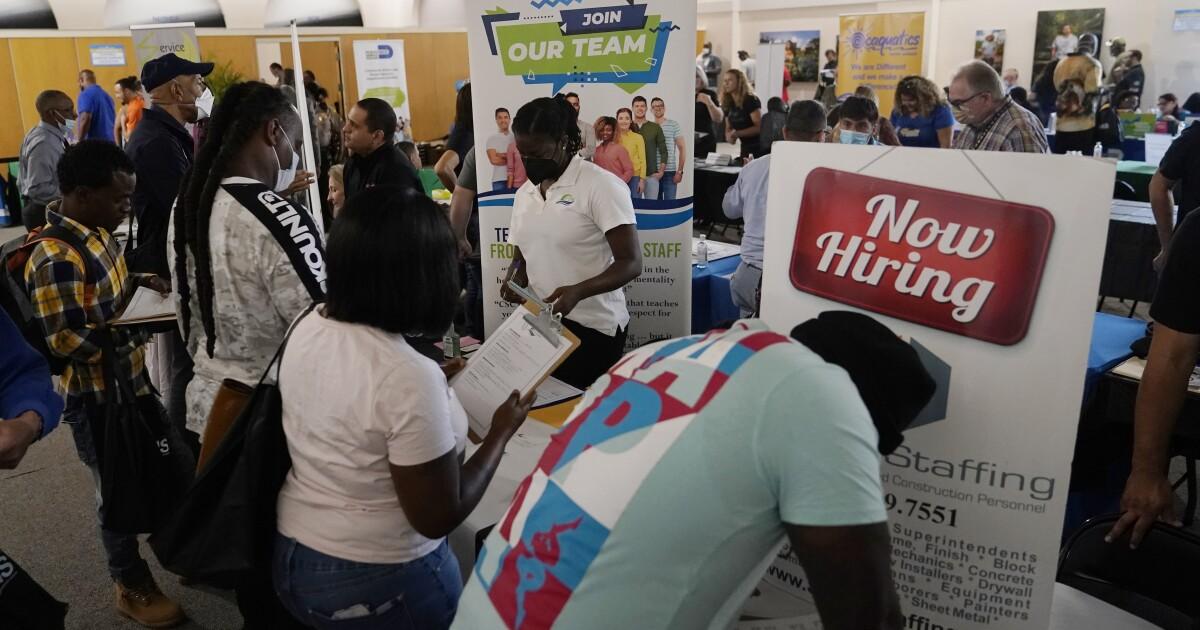
Even though people were worried that the economy would go down, the number of jobs in the US went up a lot in January.
The Labor Department said that employers added 517,000 new jobs last month.
That was a lot more than anyone thought, and it helped bring the unemployment rate down to 3.4%, the lowest it has been since 1969.
Analysts need help figuring out what’s happening in the world’s largest economy, which is being hurt by higher borrowing costs and rising prices.
Many economists have said that the chances of a recession this year are higher than usual. They point to numbers that show recent drops in consumer spending, manufacturing, and home sales.
A recent poll by the research company Morning Consult showed that almost half of the people think the economy is already in a downturn or recession.
Even so, the job market has stayed strong, and the gains in January surprised economists who argued against the bad predictions.
“This is a shocking number,” economist and University of Michigan professor Justin Wolfers wrote on Twitter after the report came out.
Dante DeAntonio, a director at Moody’s Analytics, said that you should put less weight on data from just one month.
His company still thinks that job growth will slow “dramatically” in the next few months, and it said that the chance of a recession was “uncomfortably high.”
But US President Joe Biden said the report proved that his critics were wrong when they said the economy was in bad shape. His approval ratings went down last year as prices went up, and Republicans blamed his spending plans.
Most of the hiring in January was in bars and restaurants, which are still getting back on their feet after losing jobs during the pandemic.
Jobs were lost in a few sectors
The only industries to lose jobs were those that made cars and those in the tech field.
These industries are sensitive to the cost of borrowing money, which went up last year when the US central bank took steps to keep consumer prices stable.
The Federal Reserve wants to slow down demand by raising interest rates, making prices easier to go down.
But the fact that rates are going up when price increases are starting to slow down has caused people to worry that the government will force the economy into a painful contraction. This would cause a sudden drop in economic activity, which could lead to firms cutting jobs.
This week, Jerome Powell, the head of the Federal Reserve, said that he hoped the US central bank could avoid that situation.
But he warned that the Fed was trying to stop inflation and was still worried that the job market was too strong for price growth to stabilize around the bank’s 2% goal.
According to a report on Friday, wages rose 4.4% in the year leading up to January.
Last year, pay raises didn’t keep up with price increases, and there are signs that they need to catch up.
Seema Shah, a strategist at Principal Asset Management, said it’s hard to see how wage pressures could ease enough when job growth is this strong. It’s even harder to see the Fed stop raising rates and start thinking about lowering them when so much exciting economic news is coming in.
As the market tries to decide if this is good or bad news, it will go up and down like a roller coaster. But right now, everything is fine with the US economy.
As inflation drops, the Fed says it will raise rates less.
The US central bank raised interest rates again as part of its efforts to keep prices stable in the biggest economy in the world.
The Federal Reserve said it would increase its key rate by 0.25 percentage points.
After a series of big rate increases last year, this is the smallest increase since March.
But officials said they didn’t think they were done raising rates, even though there are signs that price growth in the US is slowing down.
The bank’s moves are closely watched worldwide because the US is leading a change after the financial crisis and years of low-interest rates.
On Thursday, both the Bank of England and the European Central Bank are likely to announce their own rate increases.
The Fed’s decision to raise rates on Wednesday wasn’t a surprise. It increases the bank’s benchmark rate to between 4.5 and 4.75 percent, the highest level since 2007.
By making it more costly to borrow money, the Fed hopes to slow the economy and make it easier for prices to go up.
But the government runs the risk of starting a painful recession, in which the economy slows down so much that many people lose their jobs...Read More
Read Also: US economy surpassed growth predictions
Source: Real Estate Today
